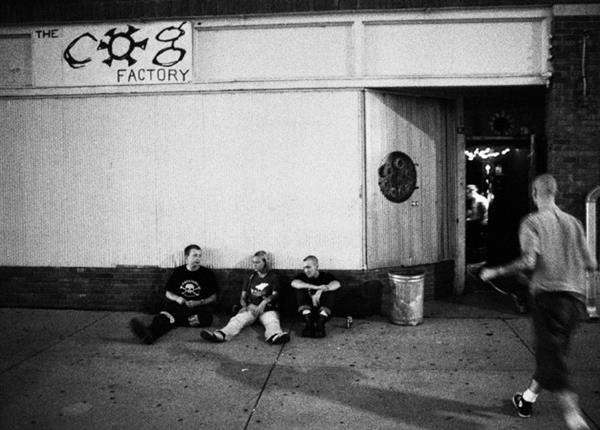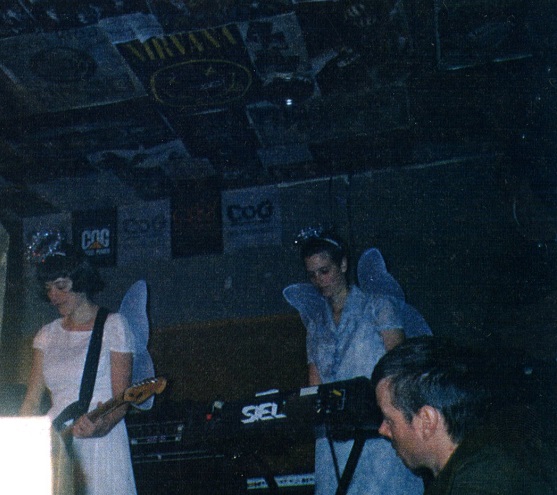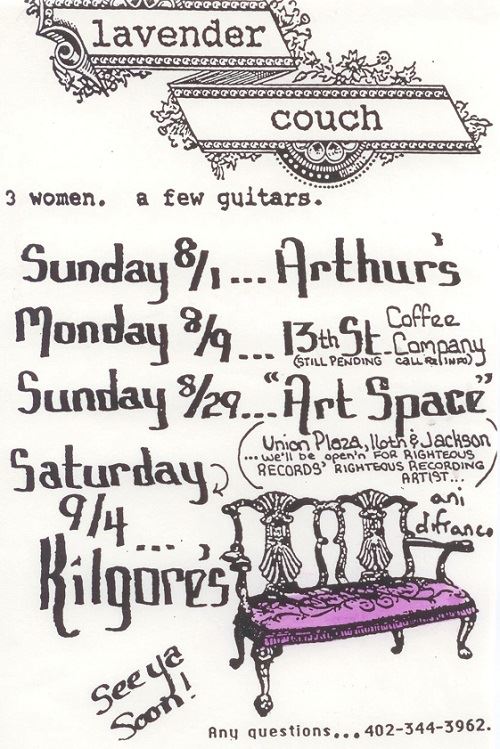Making Invisible Histories Visible
Page Navigation
- Making Invisible Histories Visible
- Lesson Plans and Resources
- iBooks on Omaha and Nebraska History for Primary Students
- Omaha Mapping Projects
-
African American Histories
- African American Artists
- African American Athletes & Facilities
- African American Churches
- African American Civil Rights Organizations - 1950s-1960s
- African American Civil Rights
- African American Contributions to Jazz, Gospel, Hip-Hop
- African American Dramatic Arts
- African American Education - Dorothy Eure & Lerlean Johnson
- African American Educators & Education
- African American Firefighters
- African American Homesteaders
- African American Law Enforcement
- African American Migration to Omaha
- African American Musicians of Omaha
- African American Newspapers
- African American Owned Businesses
- African American Politicians
- African American Social Life
- African American Workers at Omaha's Railroads & Stockyards
- African American Workers at the Naval Ammunition Depot in Hastings
- African Americans in the Civil War
- African Americans in Vietnam
- Charles B. Washington - Journalist and Civil Rights Leader
- Elizabeth Davis Pittman - Lawyer/Judge
- Green Book Omaha
- Marlin Briscoe - Professional Football Player
- Native Omaha Days
- Nebraska's Role in the Underground Railroad
- Sen. Edward Danner - Politician & Civil Rights Activist
- Sudanese Refugees
- Tuskegee Airmen
- European and Asian Immigrant Histories
-
Historic Neighborhoods & Buildings
- 24th and Binney/Wirt/Spencer Streets
- 24th and Lake Streets
- Central Park Neighborhood - 42nd and Grand Avenue
- Dahlman Neighborhood - 10th and Hickory Streets
- Hartman Addition Neighborhood - 16th and Williams Streets
- Indian Hills/Southside Terrace Neighborhood - 30th and Q Streets
- Jefferson Square Neighborhood - 16th and Chicago Streets
- Long Neighborhood - 24th and Clark Streets
- Orchard Hill Neighborhood - 40th and Hamilton Streets
- Smithfield Neighborhood - 24th and Ames Avenue
- St. Mary's Neighborhood - 30th and Q Streets
- Latino Histories
- Music Histories
-
Native American Histories
- Black Elk and John G. Niehardt
- Chief Standing Bear and Susette La Flesche Tibbles
- Dr. Susan LaFlesche Picotte - Native American Doctor
- Native American Education and Boarding Schools
- Native Americans in the Military
- Pre-statehood Interaction of Native Americans and Europeans
- Preserving Native American Tradition
- Restoring the Ponca Tribe
- The American Indian Movement in the 1960s and 1970s
- The Indian Congress at the 1898 Trans-Mississippi Exposition
- The Omaha Native American Indian Tribe
- OPS Elementary School History
- Redlining in Omaha
- Nebraska's Role in the Underground Railroad
- The 1898 Trans-Mississippi Exposition
Women in Rock
-
What role did women play in the formation and establishment of the Omaha independent rock scene?
No Labels: Women in the Omaha Independent Rock Scene
-
Indie rock opened doors for local women to express themselves. Rather than being a genre, it’s a culture; indie rock isn’t limited to a certain sound. Musicians are free to voice their opinions in ways that are unrestricted. With that in mind, one cannot ignore that the scene is dominated by white men. This fact highlights the importance of documenting this story.
The project chose to highlight five core values that were present throughout the process; mentoring, representation, do-it-yourself (DIY) attitude, individuality and freedom. The music industry, in its past and present, is full of examples of sexual objectification, gender stereotypes and norms. This story serves to break that imagery and offer an alternative route to success that many women, particularly in Omaha, have chosen to take. By creating a network with one another, mentoring, utilization of resources, women in the indie scene found ways to overcome a male-centric environment. In the age of the #METOO movement, this manner of self-promotion, DIY spirit, and creativity, independent female musicians find themselves at the forefront of a cultural movement.
You may not be able to see it today, but in some Omaha venues indie rock thrived. Places like the Cog Factory made Omaha special to the indie rock family - getting the word out about bands like Lavender Couch and Park Ave, welcoming them into the community. Independent labels like Saddle Creek Records in Omaha also allowed artists to be authentic to themselves by allowing their creativity to come through and offer support. This story goes beyond music and touches upon the achievements of women, despite additional hurdles placed in their path as compared to their male peers. Their success was not at the expense of authenticity, rather, because of it.
Published during the Summer of 2018
This video discusses how the women of the Omaha Independent Rock experienced and impacted the scene. Through the lens of mentorship, creativity, obstacles to success, authenticity, and more, the interviews will illuminate a hidden history of Omaha’s recent musical past. We interviewed Heidi Ore, Jamie Pressnall, Cami Rawlings Cavanaugh, Jessica Mogis and Jenn Bernard Walker. The documentary can also be watched on YouTube.
Cog Factory
-
The Cog Factory was an important all-ages indie rock venue located at 2224 Leavenworth St. Open from 1994-2002, The Cog Factory did not sell alcohol, which was crucial to bands that included high school students, as well as underage fans. Like the indie rock scene, more broadly, Cog Factory performers were male-dominated, with a few female groups, such as Lavender Couch, Mercy Rule, Tilly and the Wall, and Park Ave. The venue embodied the DIY spirit of indie rock. As many who performed, or attended, shows at The Cog Factory recalled, “It was a dump, but it was our dump.” (Image Courtesy of Kyle Beneke Collection)

Park Ave Playing at the Cog Factory
-
In this photo, Jenn Walker (left) and Jamie Pressnall (right) perform in angel costumes, as the men of the group dressed as devils, at the Cog Factory, as a part of the band Park Ave. It is one of the few images of young women playing at the venue and illustrates the D.I.Y. culture of the indie rock scene. Notice the posters on the ceiling, featuring other alternative music groups.

Ani DiFranco and Lavender Couch Poster
-
 The story goes, Cami Rawlings, then of Lavender Couch, was given a cassette of Ani DiFranco’s. She listened to it, loved it, and shared it with the band. They were so inspired, they decided to call the phone number on the cassette and invite Ani to Omaha to play. $300, and a plane ticket later, Lavender Couch was able to bring Ani DiFranco to Omaha! The band arranged for a community space in a downtown apartment complex to hold the show. And the rest is history. This moment encapsulates the DIY spirit of the independent music scene. Lavender Couch served as the booking agent, promoter, venue management and a performer, all in one instance. (Image Courtesy of the University of Nebraska at Omaha Archives)
The story goes, Cami Rawlings, then of Lavender Couch, was given a cassette of Ani DiFranco’s. She listened to it, loved it, and shared it with the band. They were so inspired, they decided to call the phone number on the cassette and invite Ani to Omaha to play. $300, and a plane ticket later, Lavender Couch was able to bring Ani DiFranco to Omaha! The band arranged for a community space in a downtown apartment complex to hold the show. And the rest is history. This moment encapsulates the DIY spirit of the independent music scene. Lavender Couch served as the booking agent, promoter, venue management and a performer, all in one instance. (Image Courtesy of the University of Nebraska at Omaha Archives)
Additional Information
-
“Indie” is a label that simultaneously means everything and nothing when applied to a musical act. On first consideration, it means an act isn’t signed to a major record label – but even the term “major label” is often hazy, and technically refers to any international conglomerate that controls a major share of the total global music sales. That means that an “indie” act is signed to anything except the half-dozen or so labels that qualify as major, or is unsigned entirely. Attempts to identify a particular sound for indie is nearly impossible as a result.
Instead, indie rock has been defined as an attitude more than a sound. Commitment to “do-it-yourself” has always been crucial, with a wealth of handmade fan-zines, low-fi recording technology, and venues that were little more than four walls and a power source defining and identifying the indie community.
The other vital component of indie rock was the emphasis on authenticity. Bands like Mercy Rule, Tilly and the Wall, Park Ave, and Lavender Couch, all of Omaha, wrote and played music that reflected the band members’ lived experiences. Beyond just the lyrics, though, was the sound itself: low-fi, rough around the edges, the kind of music that anyone listening might imagine picking up an instrument and being able to play in a band.
Despite this emphasis on DIY and authentic music, for women, being part of the indie scene could be an uphill battle. As the recent #MeToo movement has shown, sexism and gender-based power dynamics have long impacted women attempting to make room for themselves in the arts: film, music, and literature, to name only a few. Indie rock has been, and continues to be, dominated by straight white men, and although things have started to shift toward increased diversity, there is still a clear majority. That is why the voices of women such as Heidi Ore (13 Nightmares/Mercy Rule/Domestica), Cami Rawlings Cavanaugh (Lavender Couch), Jamie Pressnall (Tilly and the Wall), Jenn Bernard Walker (Park Ave), and Jessica Mogis (ARC Studios) are so important: they demonstrate how women have continuously made room for themselves in all aspects of the music industry.
In the early 2000s, Omaha became synonymous with indie rock as the Saddle Creek Records label took off, representing bands like The Faint, Bright Eyes, Rilo Kiley, and Cursive. A supporting factor in this rise was the Slowdown and the development of the North Downtown district in Omaha. The affordability, access to venues and recording space, and centrality of Omaha made it the kind of place where artists could thrive.
In 2018, women are an increasing part of indie rock, but still face obstacles. According to Billboard, the higher number of women in the scene has not translated to more women at the top of the charts. They continue to face sexism in the industry. However, these women have risen to the challenges and turned them into poignant, relevant music that explores what it really means to be a woman in indie rock.
2018 MIHV Project
Student Reflections
-
"Making Invisible Histories Visible made it possible for me to meet so many amazingly talented women in the music industry. I loved getting to interview people, then seeing their bands in the archives we went through. I think I gained a better understanding of the importance of history in my hometown and knowing more about Omaha."
- Grace T.
"Overall the MIHV program has taught me to look at the world, differently than before and to remember there is a whole world outside of just our living room. I am now motivated to explore areas of Omaha you might have never thought existed."- Emilio P.
"I liked doing research on this topic because many of the people we interviewed had lots of cool information to tell us and I learned a lot about the Omaha music scene. I feel like we gained information about our Omaha history that could have been lost. A moment that I thought was cool was when Cami Rawlings told us about the story behind her guitar."- Natanyal L.
"This research opened my eyes to the fact that though the Omaha, as I see it, is very accepting and equal no matter sexuality or race, there still are tons of barriers that everyday people must overcome. This project just proved that no matter how big the obstacle is, you can always overcome it with self-confidence, effort and support."- Haylee M.
Resources
-
Yates, Chelsea Schlievert. Maria Elena Buszek: How Omaha Ignited Lifelong Commitment to Music, Art and Feminism | Q&A. Hear Nebraska. May 31, 2017. Accessed July 16, 2018.
McMahan, Tim. Mercy Rule. Lazyeye. Accessed July 16, 2018.
Coffey, Kevin. Memories of The Cog Factory from Its Workers, Performers and Fans. Omaha.com. April 12, 2015. Accessed July 16, 2018.
Cohen, Deborah. How Indie Rock Changed the World. The Atlantic. May 20, 2015. Accessed July 16, 2018.
Paphides, Pete. How Women Shaped Indie Rock: 'the Lyrics Could Never Have Come from a Male Perspective'. The Guardian. June 30, 2016. Accessed July 16, 2018.
Coscarelli, Joe. Rock's Not Dead, It's Ruled by Women: The Round-Table Conversation. The New York Times. September 01, 2017. Accessed July 16, 2018.
Payne, Chris. Women Are Dominating Alternative Rock, So Why Aren't They Dominating Alternative Radio? Billboard. April 20, 2018. Accessed July 16, 2018.
Powers, Ann. 20 Songs That Say 'Me Too'. NPR. October 17, 2017. Accessed July 16, 2018.
Teaching resources for modern rock music can be found at Teachrock.org
Research combined by Emilio P., Natanyal L., Grace T., & Haylee M.
Students who worked on the project will attend high school at Omaha Central, Northwest, and Bryan High Schools.


